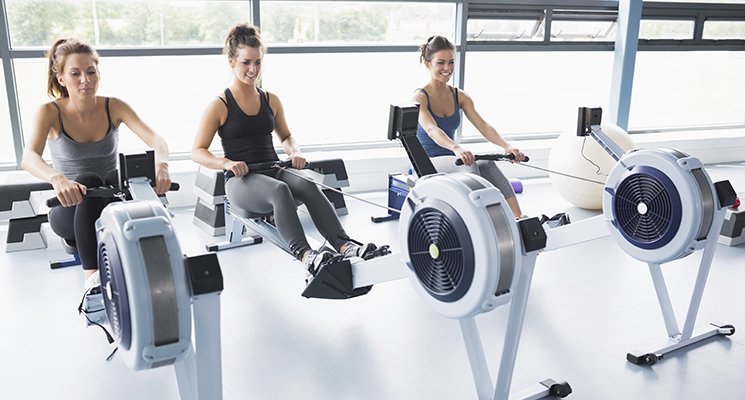Machines in group workout classes: It’s a trend that started slowly and quietly picked up speed, until all of the sudden it’s everywhere. What began with stationary bikes in the exercise room has exploded into treadmills, rowing machines, stairmasters, and ellipticals in the exercise room, and health clubs around the country are benefitting in terms of both retention and secondary revenue. If you haven’t yet begun offering machine-based group classes, or you haven’t yet expanded your offerings beyond daily spin classes, it’s time to consider the possibilities.
First, understand what kind of machine-based group workouts your community would be interested in. Take an online poll or ask members to fill out a survey when they walk in. Ask questions carefully: You want answers not only from members already familiar with exercise machines but also from members who do not regularly use them. Ask survey-takers what machines they have used in the past, what machines they might be willing to try, whether they’ve ever taken a machine-based group class before, and what might incentivize them to try one. Once you’ve gathered enough responses, assess the results.
Weigh the intelligence you gathered from members against your capacities as a club. If the majority of respondents said they’d like to try, say, a rowing class, consider whether you already own enough rowing machines to begin offering such a class. If you don’t, do a cost-benefits analysis to determine whether it makes sense to purchase additional rowing machines. If your members’ responses to survey questions leave you with no clear direction — that is, equal numbers want rowing classes and treadmill classes — you’ll need to decide whether you have the space, machinery, and resources to offer both. If not, you may need to make an educated guess about which one seems more likely to attract members (and new clients).
Next, plan out the logistics. Machine-based class programming is necessarily more involved than other kinds of class programming; you have to know what space in your facility can serve as a dedicated rowing classroom or stairmaster classroom — or, consider whether it’s possible to hold the class right in your current cardio center. Perhaps the machines you need can be isolated to one side of your cardio room and reserved for forty-five-minute stretches at a few points during the day or week when you offer the class. While this kind of planning is under way, consider what new equipment you might need to purchase, and how you’ll go about doing so. Will you take out bank loans to cover the cost? Will you lease machines? If the latter, what type of lease will you seek? It’s best to start a few direct conversations with both banks and leasing companies so you can decide which option will work best for your facility.
Once you have those details plotted out, try offering mini trial classes. You can consider these market research. If you pitch them to members as focus groups that will allow them to have a hand in shaping the class experience, you’ll likely find enthusiastic participants. After the trial classes, survey participants to find out what they liked and didn’t like. Ask specific questions: Did they appreciate whatever music and lighting effects accompanied the class? Do they have suggestions for improving the instruction? Did they like the warm-up segment of the class? The cool-down? What would they change if they could change anything?
Finally, when you have the form of the class fully figured out, advertise it like crazy. Post videos, photos, and testimonials on social media sites; paper your facility with informative flyers; give trial participants incentives to spread news of the class by word-of-mouth. Soon you’ll find yourself wondering why it took you so long to set one up, and you’ll be considering what new machine-based class to develop next.
